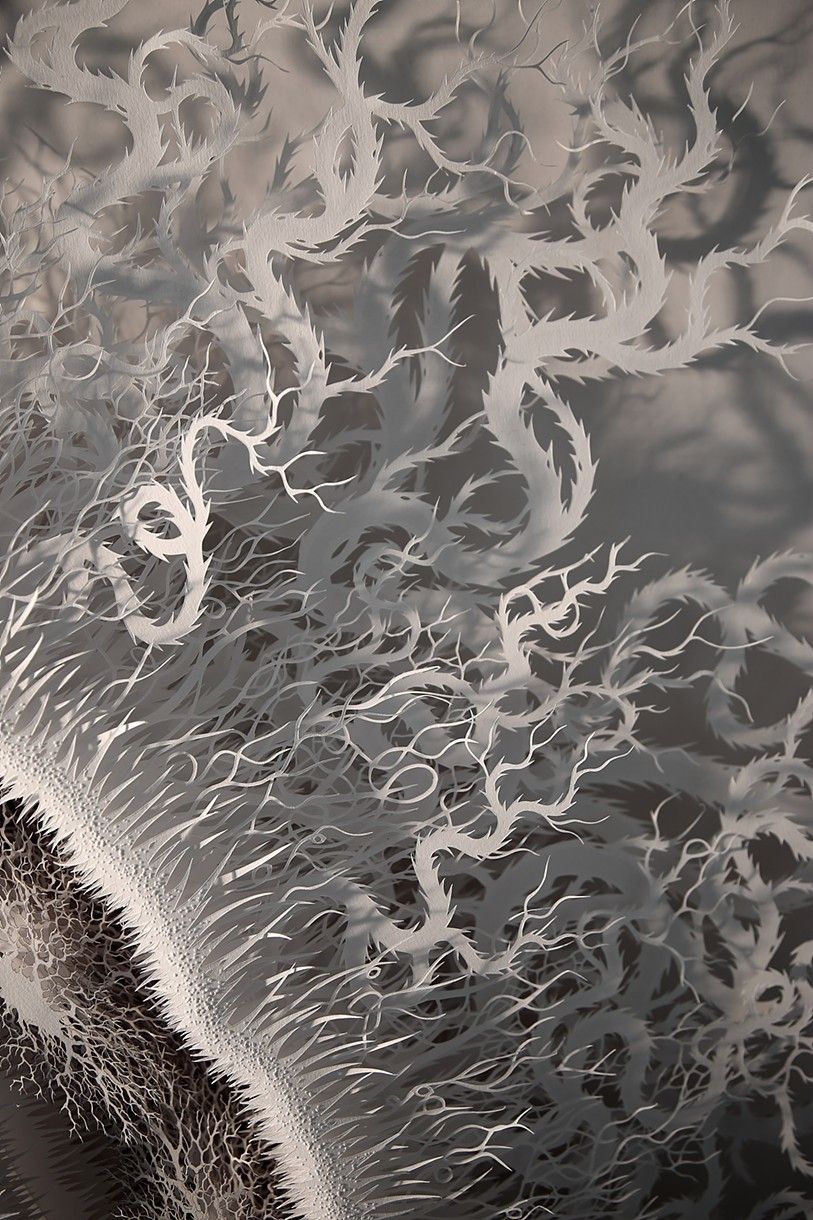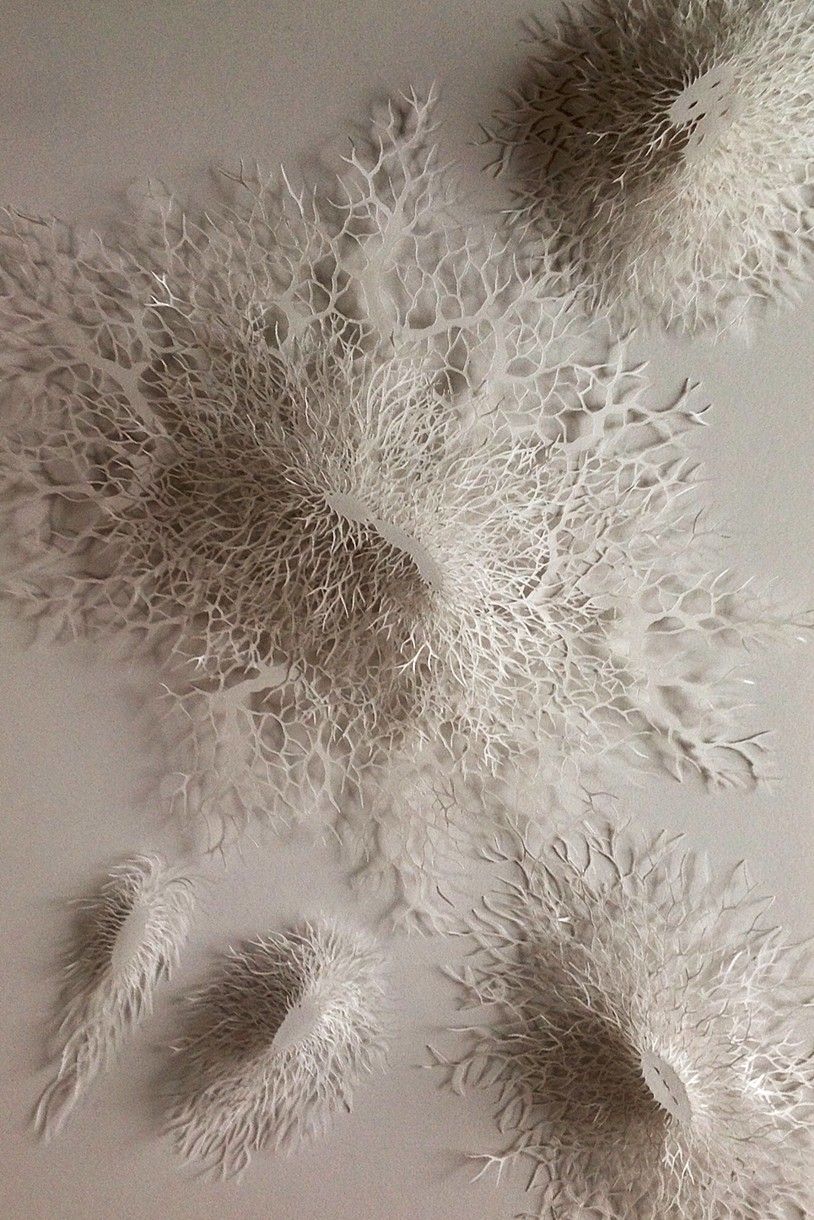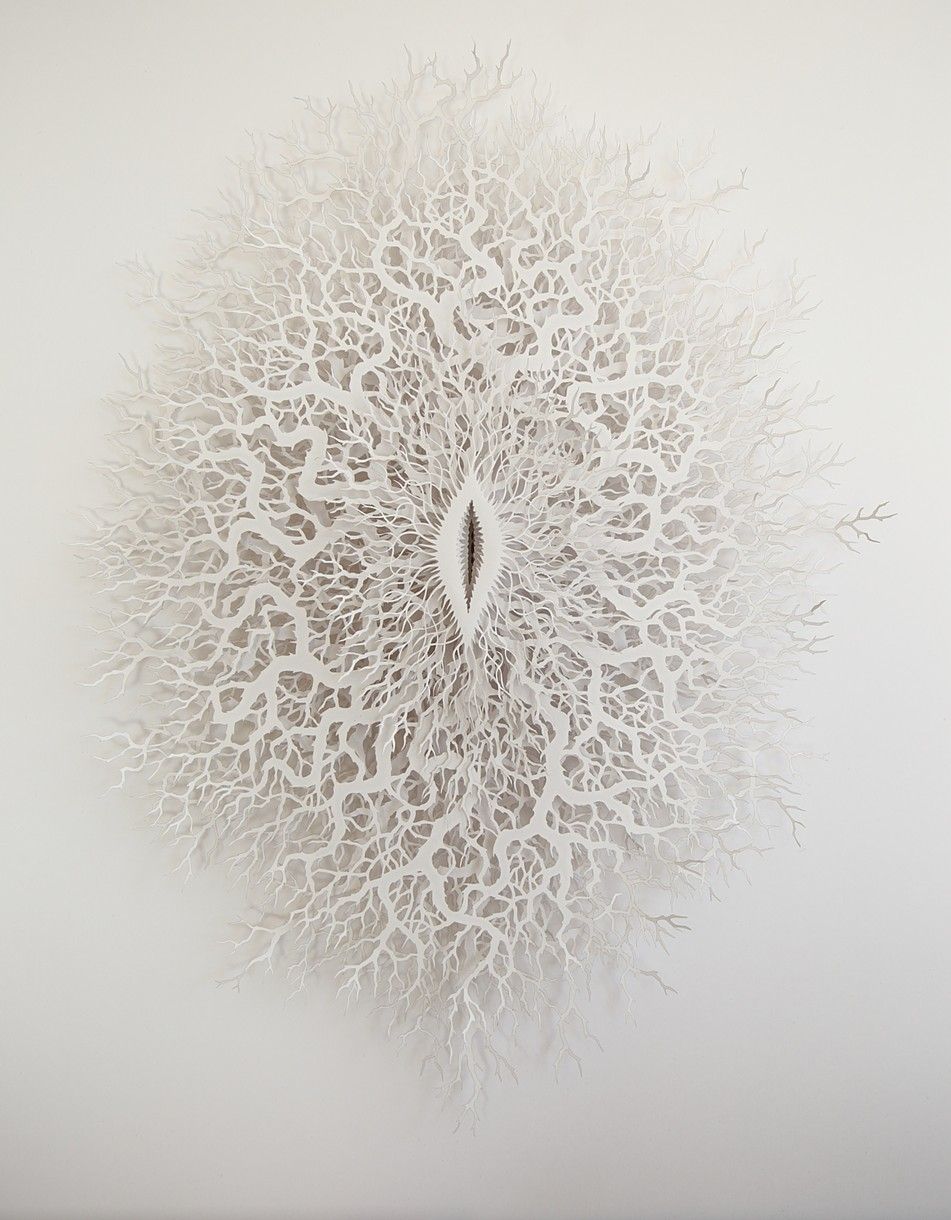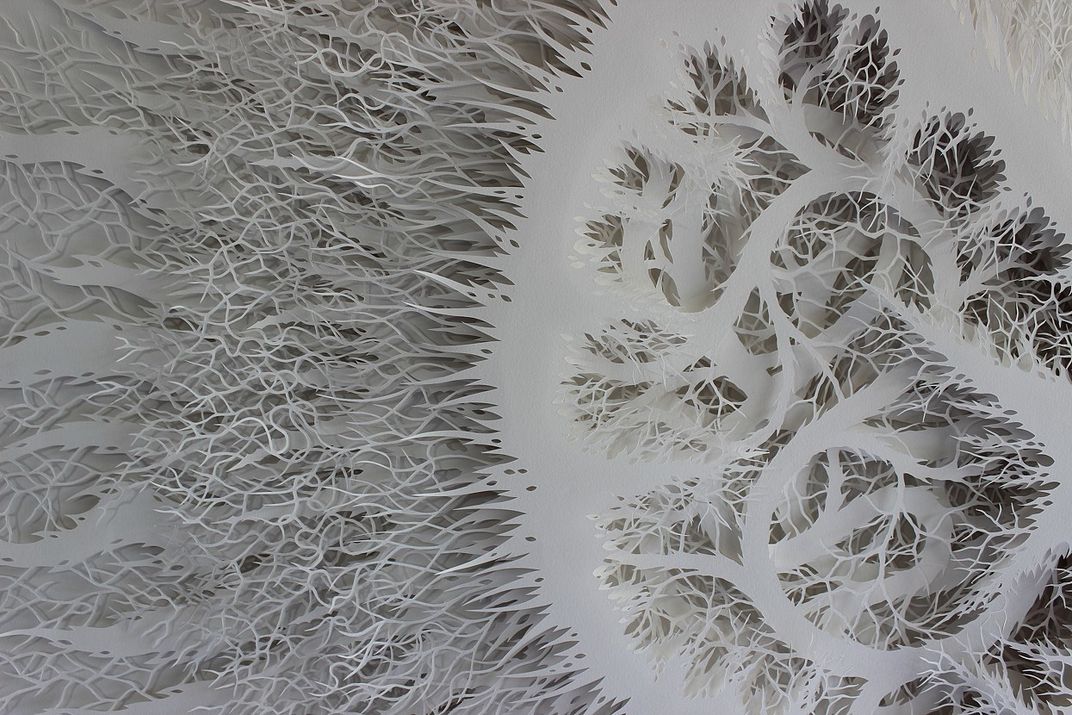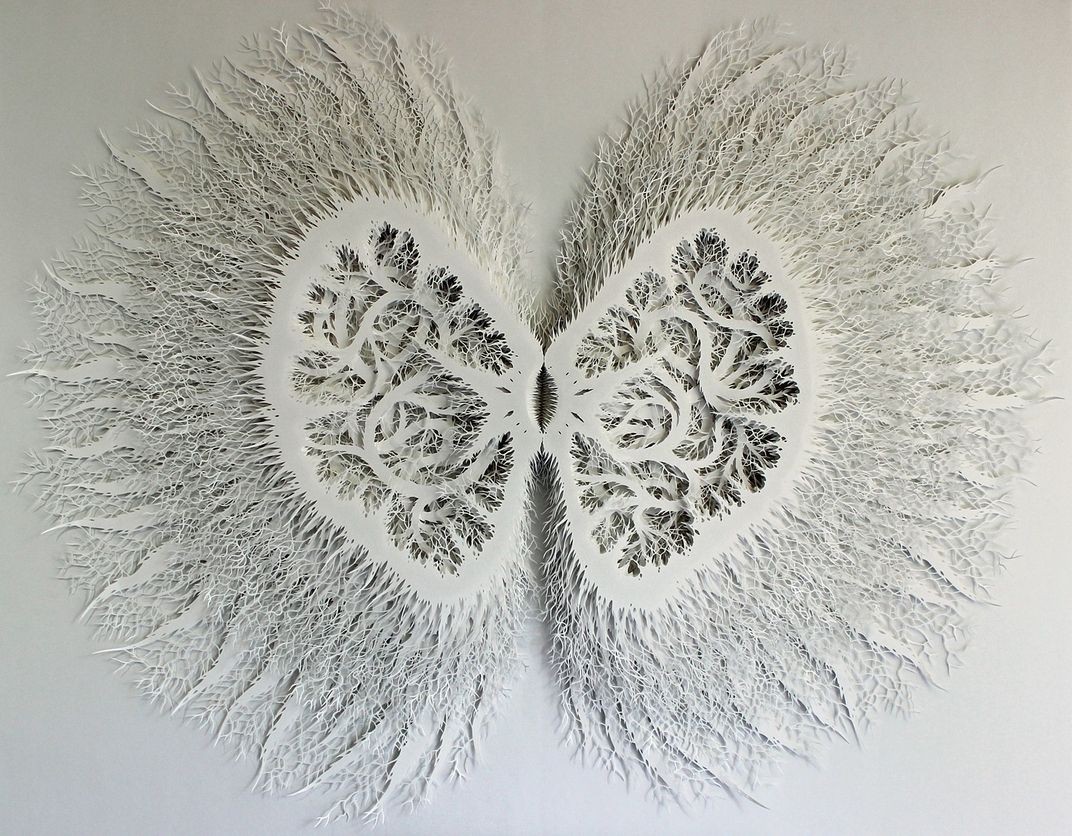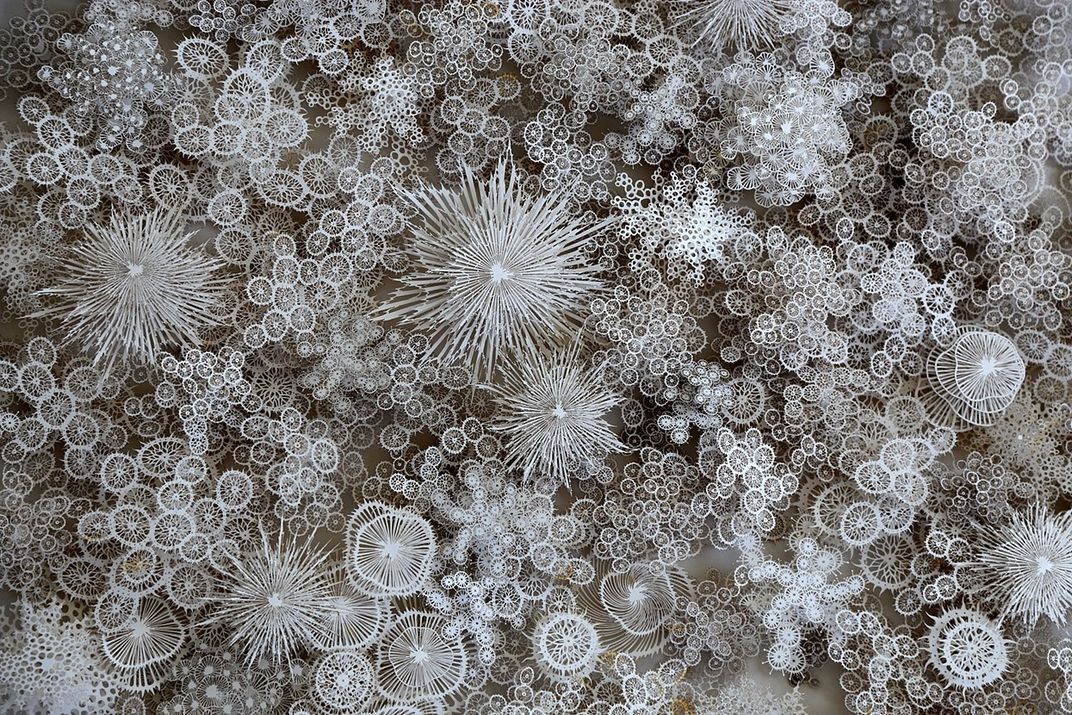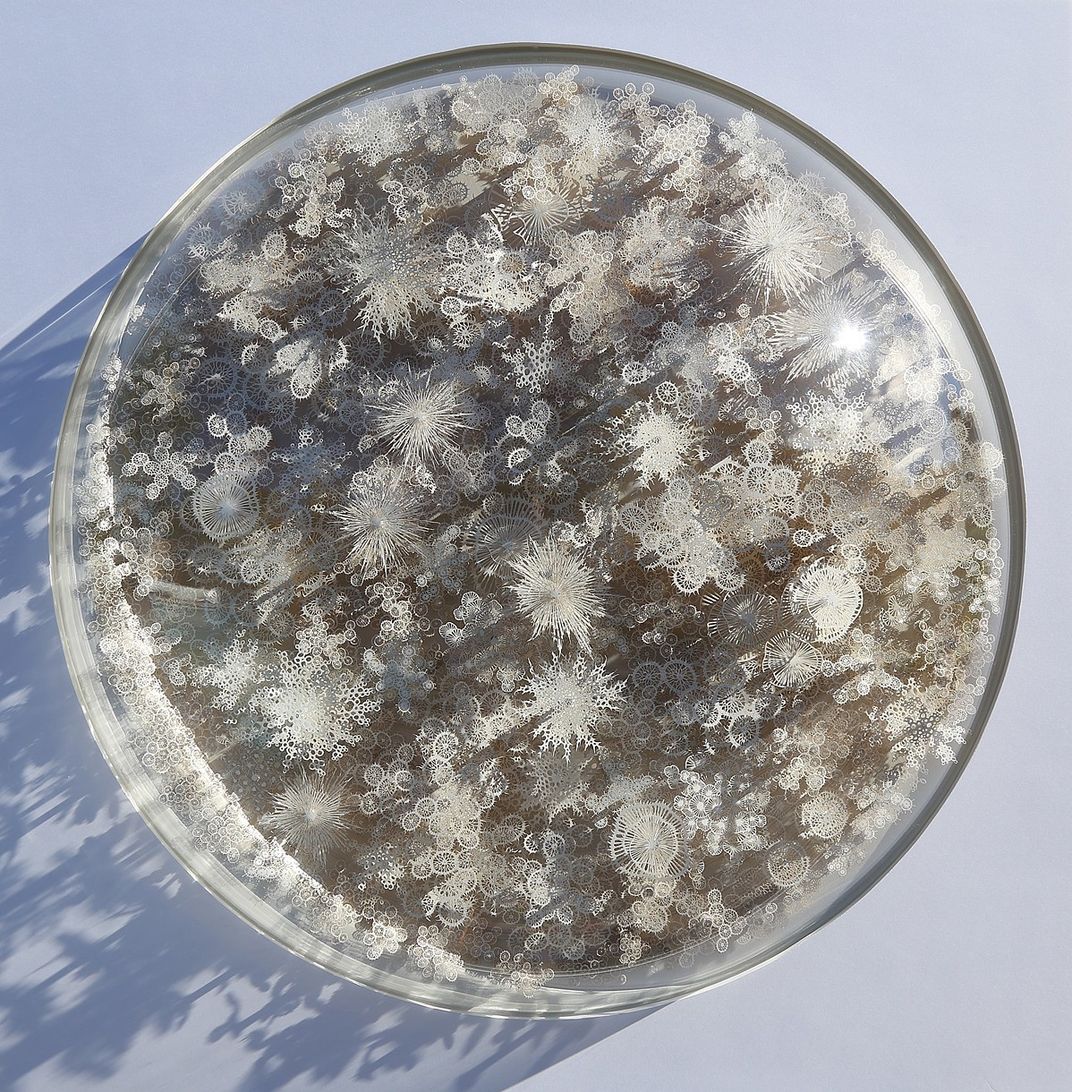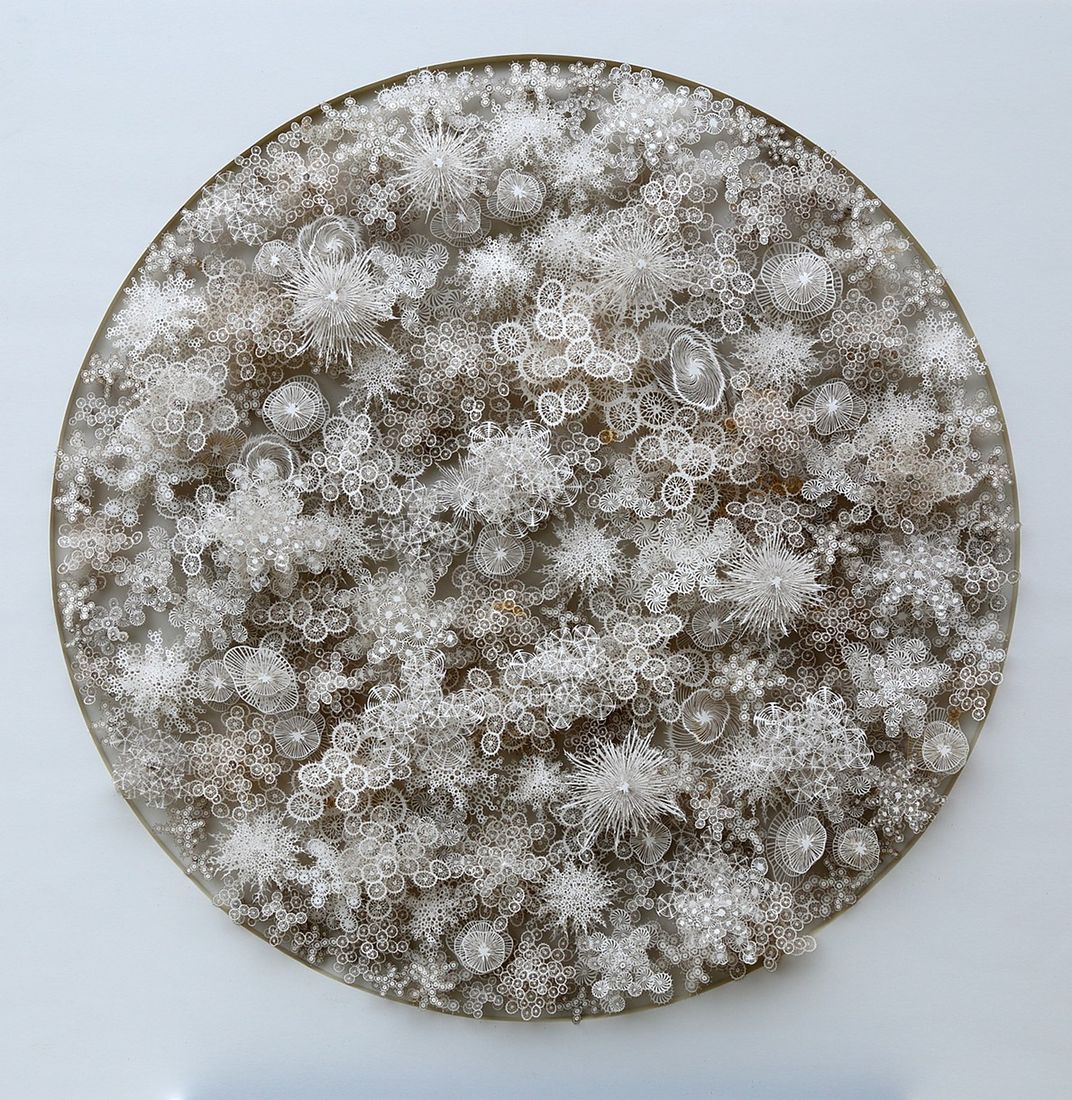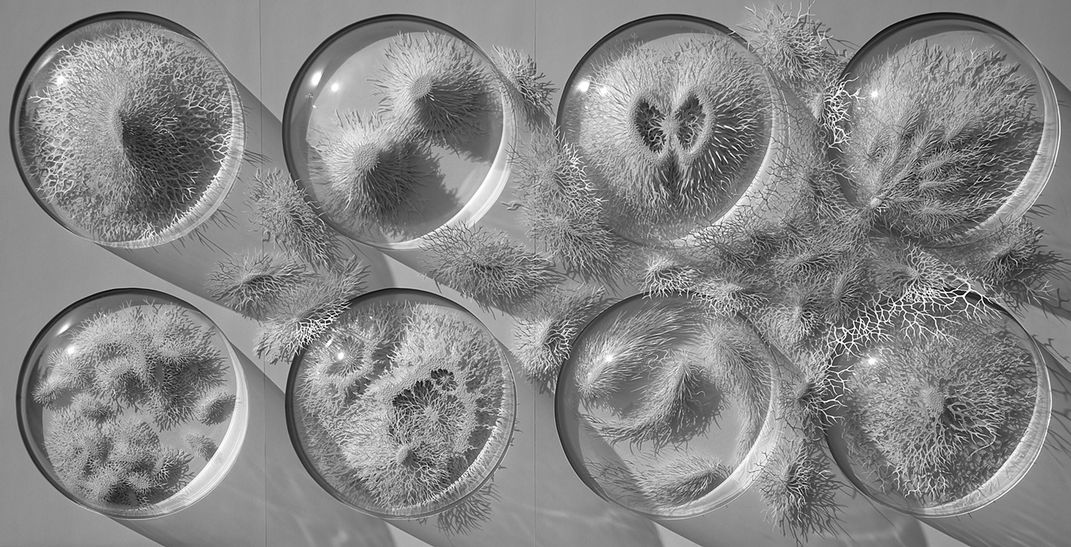Cut Paper Sculptures Capture the Intricacy of Natural Architecture
Laser and hand cut papers arranged in layers evoke the patterns of microbes, moss, cells and more
Nature-derived inspiration can be found not only in the realm of grand sunsets, sprawling forests and charging horses but also in the tiny details of the microscopic world. It just takes special tools to access that teeny trove of beauty.
Artist Rogan Brown seeks to give viewers access to that perspective shift his work. He presents a menagerie of the microscopic in a unique form—that of cut paper sculptures inspired by diatoms, coral, neurons, tree moss and cell structures, reports UFUNK.net (and This is Colossal). Brown’s monochromatic sculptures seem to float off the plane of their construction, and their rich detail encourages viewers to draw closer.
"My work plays with the architecture of nature and organic growth," Brown writes on his webpage. "By identifying patterns and motifs that occur in the natural world in different contexts and at different scales, both macroscopic and microscopic, I have developed a formal, aesthetic vocabulary that I use to construct hybrid sculptural forms, half real, half surreal."
In Brown’s "Magic Circle" series, his most recent collection of work, clusters of intricate forms are crowd together in a circle. The textures are reminiscent of diatoms, corals, bacteria and pathogens, but all are imagined forms inspired by the real thing.
Brown decided to work with paper in order to "avoid the weight of history and tradition associated with painting or photography," writes Eva Hoevenaar for De Monsterkamer. Paper, on the other hand, "emphasizes the delicacy and durability of the natural world," Brown says, with it’s combination of "fragility and toughness."
Brown cuts the largest pieces in his work by hand from sheets of paper, using a scalpel knife, and laser-cut forms encompass the rest. The process can take months, he writes on his website. "The hand-cut work is so labor-intensive and time-consuming that it makes no commercial sense at all," he tells Hoevenaar. "It doesn’t merely subvert the time-money nexus; it completely torpedoes it."
However, for those works where he does take the time to hand cut each piece, the value of the art form comes through. "The end result is the sense of something incredibly hard won and precious, which is precisely the message I wish to convey," he writes on his website. "We need enormous concentration and effort to really SEE and appreciate what we see."
